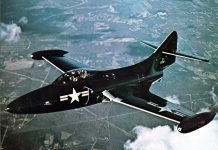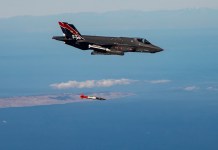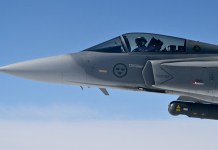The Lockheed P-38 Lightning was a significant addition to the United States’ long list of combat aircraft and is best remembered for its unique design and service to the nation.
It was the first fighter to have arrived on the scene during World War II, followed by P-71 Thunderbolt and the P-51 Mustang. All three are known for their outstanding performance during the war.
The aircraft had an extended deployment in the Pacific War, which was the theater of World War II that was fought in Asia, the Pacific Ocean, the Indian Ocean, and Oceania.
Flying over Europe, the Mediterranean, and the Pacific, the frozen Aleutian Islands, and the deserts of North Africa from 1942 to 1945, the P-38 Lightning pilots shot down more Japanese aircraft than any other combat plane did in the Pacific Theater.
According to John F. Guilmartin, writing for Britannica, the US’ need for a high-altitude interceptor against the Japanese was destined to be met by the P-38 aircraft developed by Lockheed Aircraft Company.
“It was designed to a 1937 specification calling for a high-altitude interceptor with heavy armament and a high rate of climb. No American engine then available produced sufficient power to satisfy the requirement, and designers Hall Hibbard and Kelly Johnson designed the P-38 around a pair of liquid-cooled in-line Allison engines, turbo-supercharged for high-altitude performance,” Guilmartin wrote.
“Air Force leaders in the Pacific theater seized on the decisive altitude advantage over Japanese fighters that was gained by the Lightning’s turbo-supercharged engines. A substantial proportion of P-38 production was committed to the Pacific, where its exceptional range was particularly valuable. Most of the top Army aces in the Pacific flew the Lightnings.”
Unique Design, Multiple Roles
The Lockheed P-38, nicknamed the “fork-tailed devil”, is an American single-seated, piston-engined fighter aircraft, which was developed for the US Army Air Corps.
Known for its distinctive twin booms, the aircraft had a central nacelle containing the cockpit and the armament. The aircraft was used in a variety of aerial combat roles including a highly effective fighter-bomber, a night fighter, and a long-range escort fighter when equipped with drop tanks. It was also utilized as a bomber-pathfinder and guided streams of medium and heavy bombers.
The aircraft’s development in 1937 was Lockheed’s first venture into the military plane market at a time when the United States was focused on the modernization of its air force in accordance with the developments in Europe.
While Lockheed started manufacturing, the US Army remained skeptical of the American firm’s promise of providing a 400 mph-plus airplane, which could meet the needs of the battlefield. Despite that, the design of the twin-engine fighter was approved in 1937 and the prototype made its first flight two years later.
Demand and Supply
In April 1939, the US Army submitted an order for 13 test aircraft following President Franklin D. Roosevelt’s instruction on increasing the production of new fighter jet designs. Five months later, Lockheed was awarded an additional order of producing 69 aircraft.
While the aerospace firm struggled to meet its first delivery of test planes, it was given a huge order of 607 P-38s in 1940. The US decision came due to indications that the country might have a future involvement in the events occurring in Europe.
However, production problems led to a lag in deliveries, with only 69 P-38s remained in service with the US Army Air Corps by the end of 1941.
In addition, despite being celebrated as one of the Pacific War’s best fighters, the aircraft was difficult to fly even for the most experienced pilots in the forces, US Armed Forces’ Brigadier General Robin Olds, who flew the aircraft during World War II, had once said.
“I loved the P-38 but I got those kills in spite of the airplane, not because of it,” he said.
“The fact is, the P-38 Lightning was too much airplane for a new kid and a full-time job for even a mature and experienced fighter pilot. Our enemies had difficulty defeating the P-38 but, as much as we gloried in it, we were defeating ourselves with this airplane,” Olds remarked.




